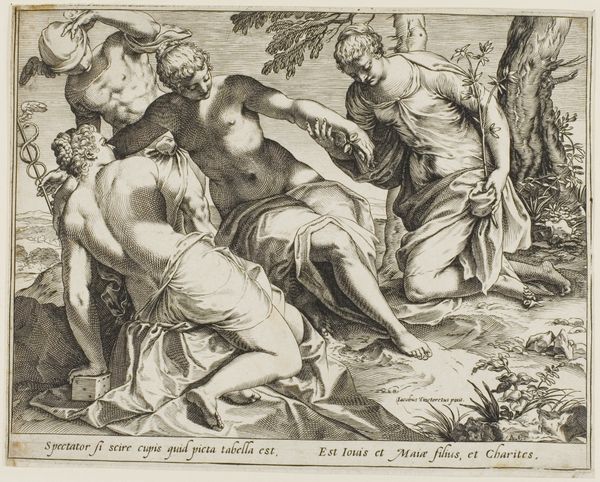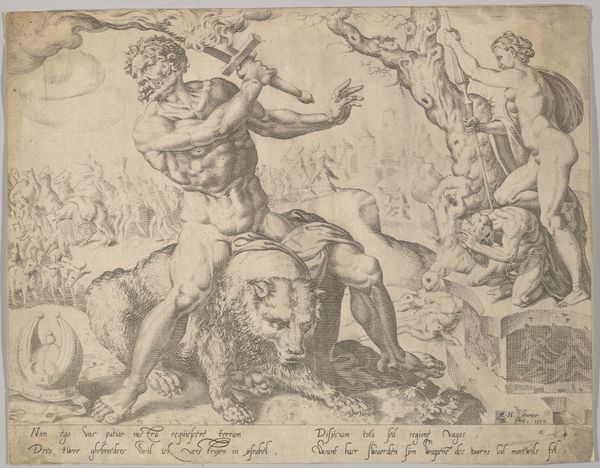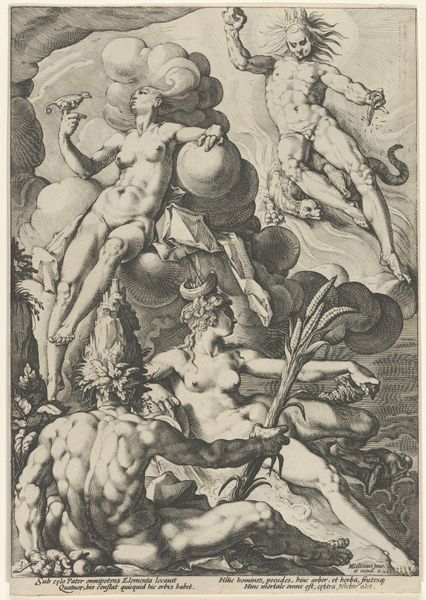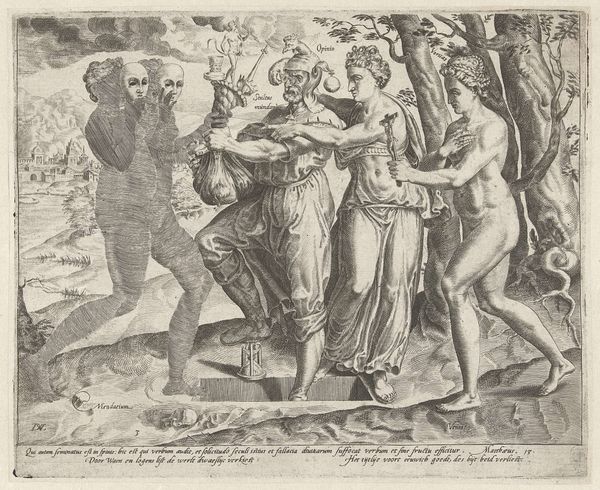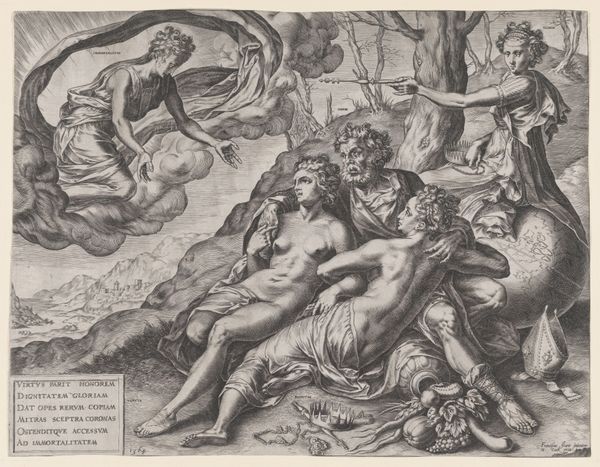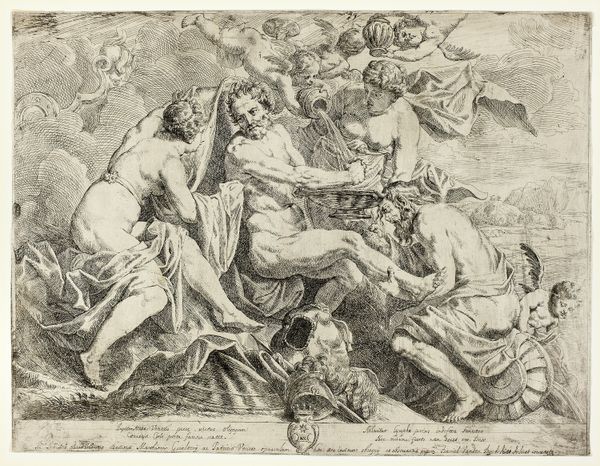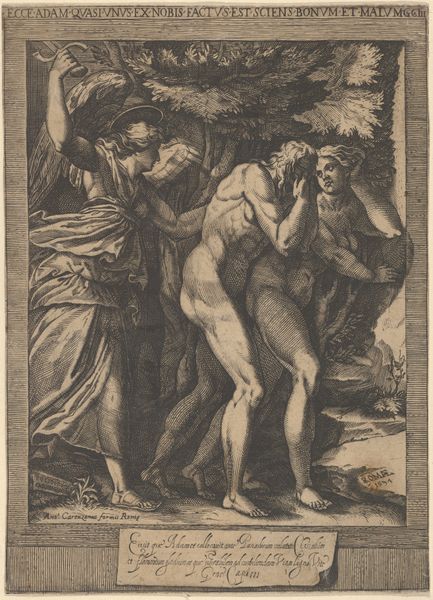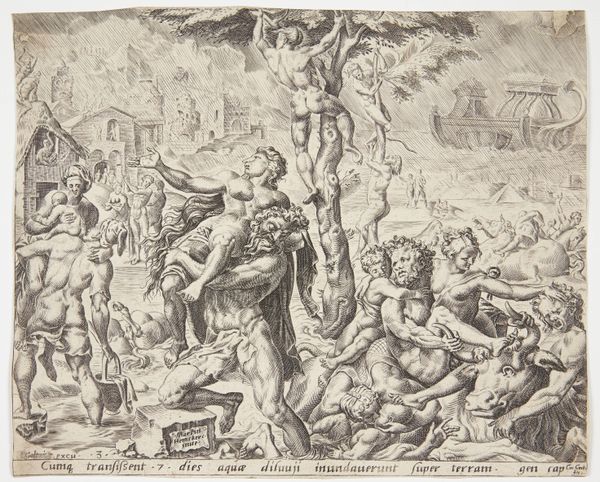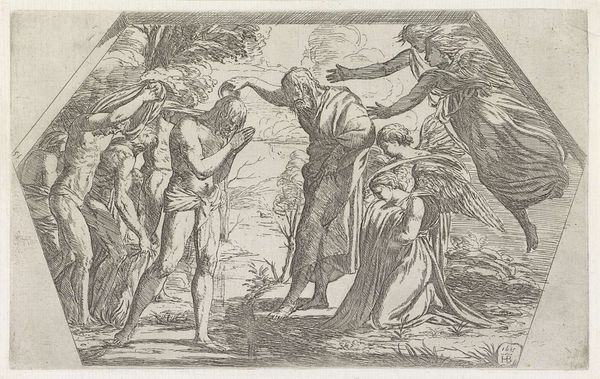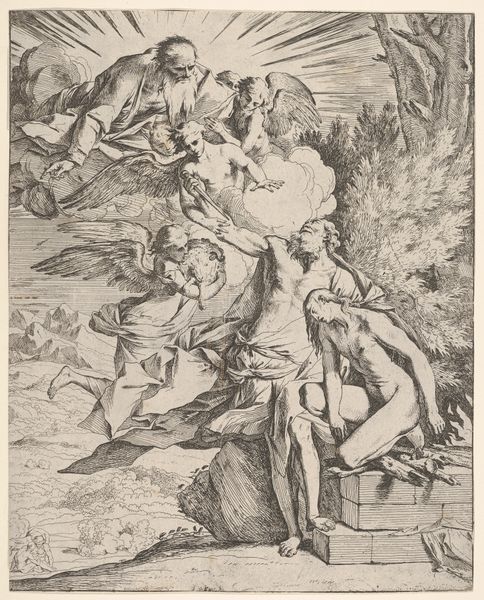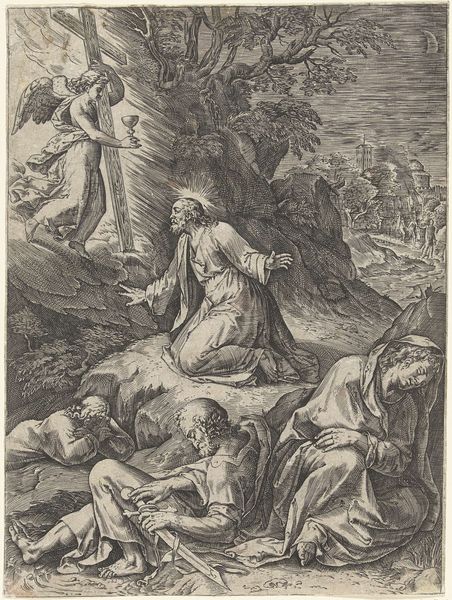
drawing, engraving
#
drawing
#
allegory
#
mannerism
#
figuration
#
history-painting
#
academic-art
#
engraving
Dimensions: height 197 mm, width 252 mm
Copyright: Rijks Museum: Open Domain
Editor: This is "Mercurius en de Gratiën" – "Mercury and the Graces" – an engraving made by Agostino Carracci in 1589. It’s quite striking, almost theatrical, with dramatic lighting. The figures seem caught in a moment of choreographed movement. What can you tell me about it? Curator: It's interesting how Carracci uses Mannerist conventions to convey a complex allegory. Consider the context: late 16th-century art was increasingly shaped by the dictates of powerful patrons and the Church, who favored clarity and moralizing messages. While this image is outwardly about classical mythology, it speaks to the role of art itself. Editor: How so? Curator: Look at the three Graces, often associated with beauty, charm, and creativity. By placing Mercury, messenger of the gods and patron of commerce, in their presence, Carracci comments on the patronage system. Are the Graces offering their skills in exchange for Mercury’s influence and power? Or is it the other way around? What did artistic collaboration really mean at that time? Editor: That's a compelling perspective. It makes me think about the power dynamics between artists and their sponsors, and how those relationships impacted the artwork itself. So it is not simply a pleasing classical scene but a commentary on artistic production itself? Curator: Exactly. Furthermore, engravings like these played a critical role in disseminating artistic ideas and establishing reputations, which itself involved market relationships and institutional endorsement. It's a complex interplay of mythology, artistry, and the social forces shaping the art world. Editor: I hadn't considered the political undercurrent. Thinking about art as part of these networks really deepens my understanding. Thanks! Curator: And for me, it is interesting to consider that the image had an intended "use," or served a certain social function for the engraver. It allows to view art as not merely aesthetics.
Comments
No comments
Be the first to comment and join the conversation on the ultimate creative platform.
